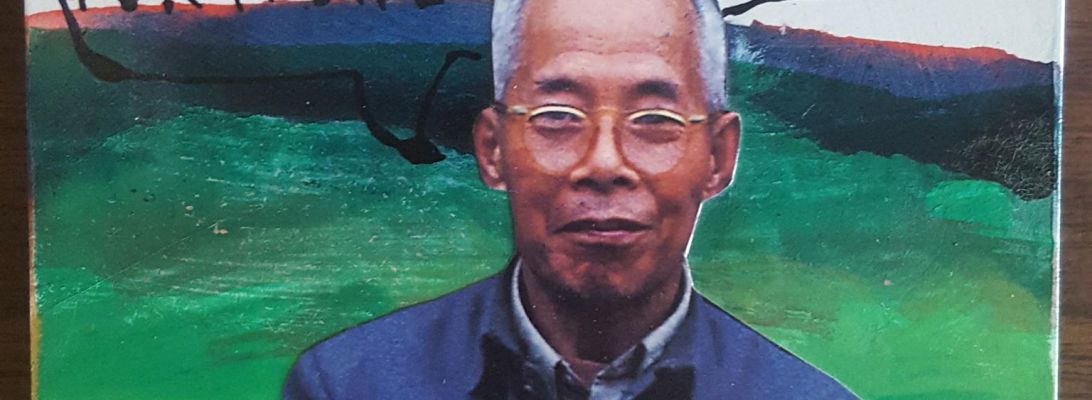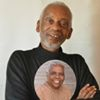If you are anywhere near Mendocino this weekend, please don’t miss Paul McHugh’s presentation about his new political thriller, The Blind Pool, at Gallery Bookshop — 6:30 till 7:30 Friday September 15.
Paul McHugh is one of the most dedicated, focused, inspired (and hence inspiring), and wide-ranging writers I’ve ever known. I’ve known Paul for more than 40 years.
Here’s more information about him — in his own words. I hope to see you in the crowd on Friday!
Local Boy Tries to Make Good (writin’)
By Paul McHugh
Amongst the many splendid landscapes that sheath our Earth, I feel most at home on California’s North Coast. I wasn’t lucky enough to be born here – my planetary incursion occurred on the south tip of Florida, and my youth unfurled near the Everglades. However, that boyhood did award me an enduring taste for country life… which I found ultimately fulfilled only out West.
California’s coastline is my dwelling place now, and compared to it, my birth state no longer seems to exert much pull. After I arrived here – steering a motorcycle up Big Sur’s Highway 1 at sunrise, after driving all night from Vegas – this coast became the natal zone of my writing career. If my work can be said to have any permeating aroma at all, it would be the spicy smell of redwoods, accented by the low-tide reek of shoreline rocks and laced with a cool, refreshing flow of heavy summer fog.
My pro writing began in Albion, was matured in Mendocino, and fed on local issues emanating from Fort Bragg. I was initially trained as a poet. But when I came here, I felt stunned by how many amazing environmental and outdoor adventure stories went whisking on by with zero mention in the regional media – particularly the dominant outlet, the San Francisco Chronicle. So I gave myself an assignment: What if I tried to write about such things, and do so as if I actually knew how to be a journalist?
Worked like a charm. First story I wrote was about unpaid environmental activists who labored by hand to clear old logging debris from the Albion River, so that salmon could again ascend to traditional spawning gravels. I contrasted that with a gyppo logger’s flagrant abuse of a “diseased” diagnosis from a forester buddy to cut down healthy redwoods in a residential area of Redway, on a bend of the Briceland Road. I sold that tale for $500 bucks to “California Living” magazine.
And I was on my way! Scores of other stories followed, published in a broad array of venues. I wrote about hiking on the Lost Coast, ascending King Peak, kayaking coast rivers and sea caves, fishing for steelhead, diving for abalone, backpacking in the Yolla Bollies, and bowhunting deer on Strong Mountain.
But mainly, I focused on my bread-and-butter topics: resource-use issues.
In an excess of caution, and to scrub away any lingering vestige of “outsider” status as well, I made sure to immerse myself in local culture before I tried to write. For example, before I ventured to describe logging issues, I worked for two weeks as a limber and choke setter for a gyppo outfit from Albion. Prior to writing about salmon, I worked as a puller on a “mosquito fleet” vessel out of a local harbor. Before telling stories about ranching, I participated in sheep and cattle gathers, roundups, taggings and brandings on ranches adjacent to Willits and Boonville. (I vividly recall needing to search every crevice of my body to pluck out ticks after days of sacking fleeces during a shearing week in Yorkville…)
It might be a bit wearing for readers, were I to cite every writing assignment that kept me in food-rent-and-gas money. But a huge range of topics kept me enthused and fascinated, and I turned my hand to almost every storytelling opportunity that I could spot. Suffice it to say, while I lived in a tiny garret room at one end of an attic in the second story of a house at Ford and Covelo streets in Mendocino, I published my first novel, with Island Press (“The Search for Goodbye-to-Rains”), created my first video documentary, on a danger the Peripheral Canal posed to North Coast streams (“The Eel – Life of a Threatened River”; it aired statewide on public television as a centerpiece of Water Night, two weeks before the public vote on the Canal proposition and thus had a role in the measure’s defeat at the ballot box) and worked with might and main on a civic campaign to establish wilderness on Snow Mountain and other sweet spots in Mendocino National Forest, and to expand the Trinity Alps Wilderness.
And of course, life wasn’t entirely work, all unremitting and unrelieved. I’d go often to poetry readings and performances and films at The Well, have coffee and apricot rugulah at the Mendo bakery, dance to Kate Wolf’s music at a roadhouse in Elk, and perform community theater with Gloriana Opera Company. I would often jog a trail to the waterfall in Russian Gulch State Park. And if I needed additional incentives to keep going, I’d take a snifter of brandy and a plate of lamb-and-garlic dolma in the Gray Whale Bar at MacCallum House, or puff on Balkan Sobranies while listening to exquisite classical music selections emanating from Alphonso’s cluttered shop – he was my tobacconist on Main Street.
All of which (about a decade of it) set me up for becoming a lead features writer, as the San Francisco Chronicle launched its pioneering Outdoors Section in ’85. I happened to be the guy in the right place, at the right time, with the right background. For the next 22 years, I clung avidly to that post. That was with one hand. With my other, I wrote a number of investigative series for the front page, including one that took down a corrupt director of the California State Park Foundation, and another that re-vamped operation of the Asilomar Conference Center and put an embezzler in San Quentin.
And for my 20th anniversary at the Chron, I envisioned then executed a “North Coast Series,” a story cycle based on sea kayaking from the Oregon border to San Francisco Bay, covering 400 miles in 40 days, and filing 35 stories, five videos and four podcasts en route. This grand celebration of one of our Earth’s last, best places can still be found (enhanced by extra writing and additional photos), posted at paulmchugh.net.
Nowadays, I’m delighted I once more get to roam around the North Coast, on a book tour. My most basic motivation is to promote my new book, of course – a novel, a political thriller, “The Blind Pool.” But I must say, this tour also offers me a wonderful excuse to travel again the winding shoreline and forest roads that constitute some of my favorite scenery, discovered amid the best years of my life. (Thus far…)
Paul McHugh will speak and read from his new novel, The Blind Pool, at The Gallery Bookshop in Mendocino, at 6:30 p.m. on Friday, September 15.




